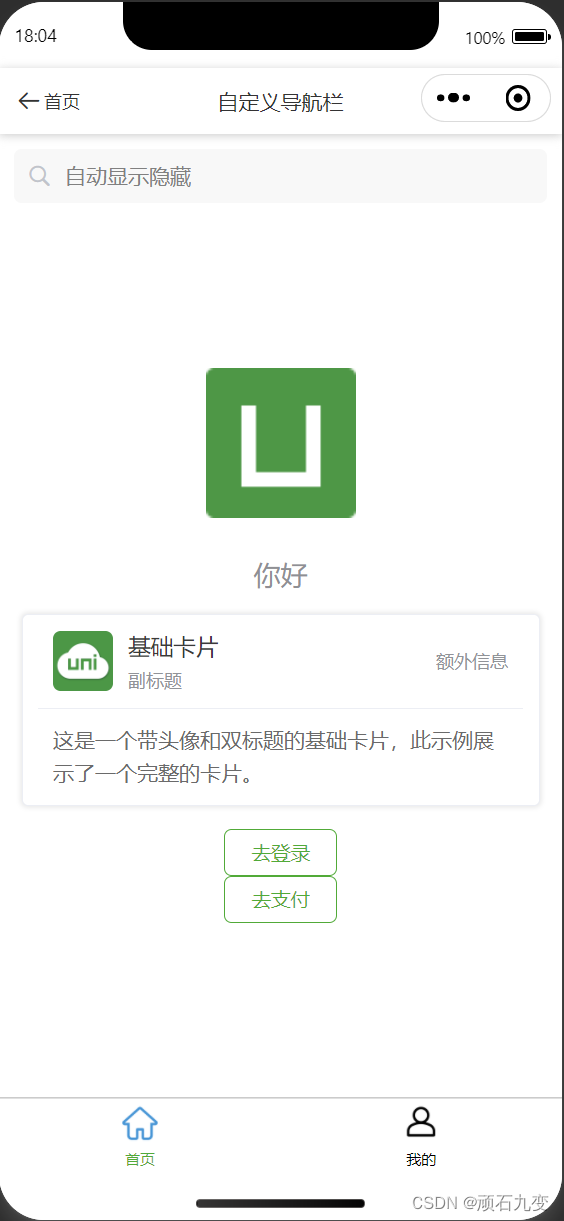一、自定义状态栏
可以设置某个页面的状态栏自定义或者全局状态栏自定义。
这里以首页状态栏为例。
1)pages.json 中配置"navigationStyle": "custom",代码如下:
{"pages": [ {"path": "pages/index/index","style": {"navigationStyle": "custom","navigationBarTitleText": "首页"}}],"globalStyle": {// 如果要配置全局自定义状态就是下面这行代码// "navigationStyle": "custom"//...}
}
2)增加自定义状态栏组件CustomNavbar.vue
因每台手机的顶部预留高度不一样,需要通过方法uni.getSystemInfoSync() 获取顶部安全区域高度,然后通过样式预留出来。
下面代码通过设置样式 paddingTop: safeAreaInsets?.top + 'px'预留顶部安全高度
<template><view :style="{ paddingTop: safeAreaInsets?.top + 'px' }"><uni-nav-bar shadow :border="false" title="自定义导航栏" leftIcon="arrow-left" leftText="首页"></uni-nav-bar></view><uni-search-bar radius="5" placeholder="自动显示隐藏" clearButton="auto" cancelButton="none" @confirm="search" />
</template><script setup lang="ts">
const { safeAreaInsets } = uni.getSystemInfoSync()
console.log('safeAreaInsets', safeAreaInsets);const search = (res: any) => {uni.showToast({title: '搜索:' + res.value,icon: 'none'});}
</script><style scoped>
</style>
3)在首页vue页面中使用组件CustomNavbar.vue
<template><custom-navbar/><view class="content"><!-- 其他内容 --></view>
</template><script setup lang="ts">
import { ref } from 'vue'
import CustomNavbar from '../components/CustomNavbar.vue';
// ...... //
</script>








:Flink内存模型)




SparkCore案例)






